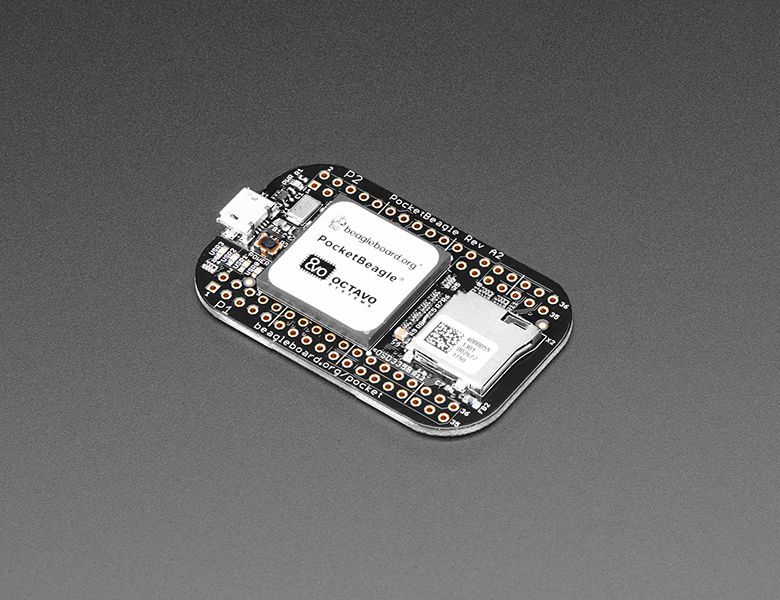
PocketBeagle by BeagleBoard
Want a powerful 1GHz AM3358 powered Linux single board that’s ultra-tiny and open-source? PocketBeagle offers a wealth of computer power in a small footprint (pawprint?). This board is just like the BeagleBone Black but small enough to fit in your wallet. It has a fully-integrated chip that combines the processor and RAM all on one chip, so it’s super small. Despite the compact shape, there are 72 total breakout pads, a microSD card slot for your filesystem and OS, and a native USB connection
Compared to other single board Linux computers, what differentiates the BeagleBone is that it has multiple I2C, SPI and UART peripherals (many boards only have one of each), built in hardware PWMs, analog inputs, and two separate 200MHz microcontroller system called the PRU that can handle real-time tasks like displaying to RGB matrix displays or NeoPixels.
It’s not too much larger than our Feathers, but comes with 72 expansion pin headers, high-speed USB, 8 analog pins, 44 digital I/Os, and plenty of digital interface peripherals.
You can also add a USB host connection by wiring a USB A socket to the broken out USB host connections labeled VI, D+, D-, ID and GND. Then plug in any USB Ethernet, Bluetooth, and Wi-Fi device with available Linux drivers.
- Processor: Octavo Systems OSD3358 1GHz ARM® Cortex-A8
- 512MB DDR3 RAM integrated
- Integrated power management
- 2×32-bit 200-MHz programmable real-time units (PRUs)
- ARM Cortex-M3
- Based on new Octavo Systems OSD3358-SM 21mm x 21mm system-in-package that includes 512MB DDR3 RAM, 1-GHz ARM Cortex-A8 CPU, 2x 200-MHz PRUs, ARM Cortex-M3, 3D accelerator, power/battery management and EEPROM
- 72 expansion pin headers with power and battery I/Os, high-speed USB, 8 analog inputs, 44 digital I/Os and numerous digital interface peripherals
- microUSB host/client and microSD connectors
Purchase
Contribute
Have some info to add for this board? Edit the source for this page here.
Adafruit Blinka Installation
We use a special library called adafruit_blinka (named after Blinka, the CircuitPython mascot) to provide the layer that translates the CircuitPython hardware API to whatever library the Linux board provides.
For example, on Raspberry Pi we use the python RPi.GPIO library. For any I2C interfacing we'll use ioctl messages to the /dev/i2c device. For SPI we'll use the spidev python library, etc. These details don't matter so much because they all happen underneath the adafruit_blinka layer.
